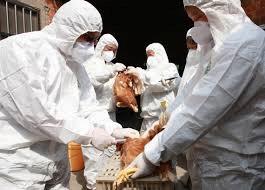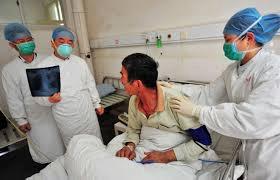 Lay media constantly amplify the negligible risk of H5N1 avian influenza for humans. This is characterized by a report of two new cases in China and Vietnam respectively, adding to the apparent diagnoses of a case in the UK, two in Spain and one in the U.S.
Lay media constantly amplify the negligible risk of H5N1 avian influenza for humans. This is characterized by a report of two new cases in China and Vietnam respectively, adding to the apparent diagnoses of a case in the UK, two in Spain and one in the U.S.
China has a population of 1.4 billion. At least 20 percent of the population or 280 million, equivalent to 85 percent of the U.S. population, shop in a wet market or come into contact with live poultry or uncooked carcasses on a weekly basis. One case among 14.6 million potential exposures in a year does not represent a high risk. According to the World Health Organization report, both the Asian patients were exposed to infected poultry.
 In reviewing the previous cases, the U.K. diagnosis involved respiratory involvement in an eighty-year-old man who lived with numerous domestic ducks within his home and fed wild ducks suggesting close contact with waterfowl infected with H5N1. The U.S. case involved an asymptomatic worker employed in depopulating an infected egg-production complex. The diagnosis was based on a routine nasal swab that assayed positive applying PCR assay. The two cases reported from Spain involving workers at sanctuaries with infected ornamental birds were apparently diagnosed by PCR assay of nasal swabs. The diagnoses reported in the lay press were subsequently withdrawn.
In reviewing the previous cases, the U.K. diagnosis involved respiratory involvement in an eighty-year-old man who lived with numerous domestic ducks within his home and fed wild ducks suggesting close contact with waterfowl infected with H5N1. The U.S. case involved an asymptomatic worker employed in depopulating an infected egg-production complex. The diagnosis was based on a routine nasal swab that assayed positive applying PCR assay. The two cases reported from Spain involving workers at sanctuaries with infected ornamental birds were apparently diagnosed by PCR assay of nasal swabs. The diagnoses reported in the lay press were subsequently withdrawn.
In all apparent and confirmed cases among the four reports there was no evidence of person-to-person infection. At the present time, H5N1 avian influenza must regarded as a disease of domestic and free-living birds and some terrestrial and marine mammals, with a wide range of susceptibility and demonstration of clinical signs and mortality.
 One can only hope that reports emanating from the World Health Organization and government agencies will be restrained in generating a public perception that avian influenza H5N1 represents a risk to consumers at this time.
One can only hope that reports emanating from the World Health Organization and government agencies will be restrained in generating a public perception that avian influenza H5N1 represents a risk to consumers at this time.